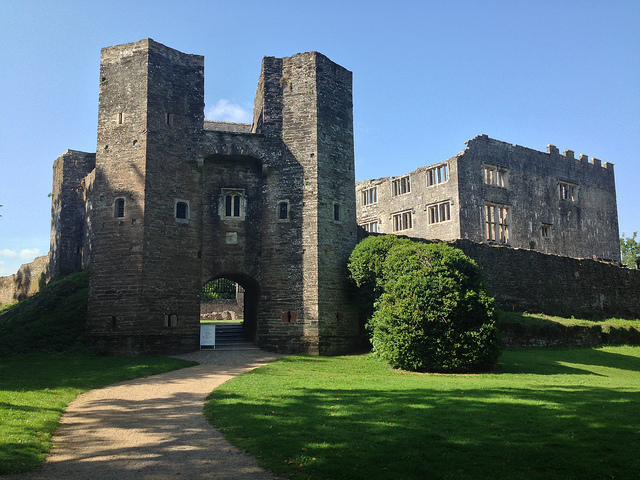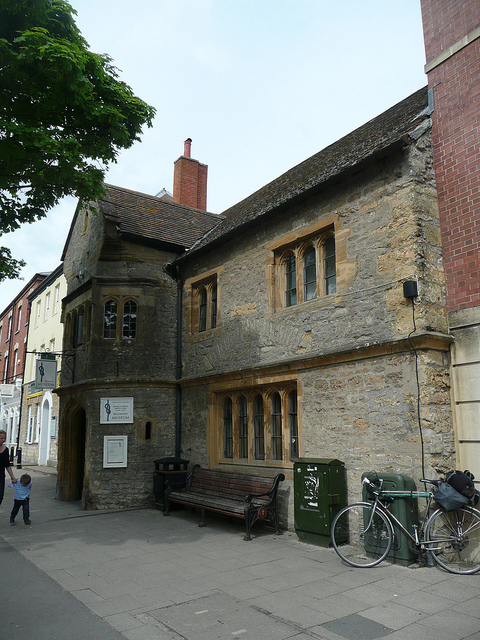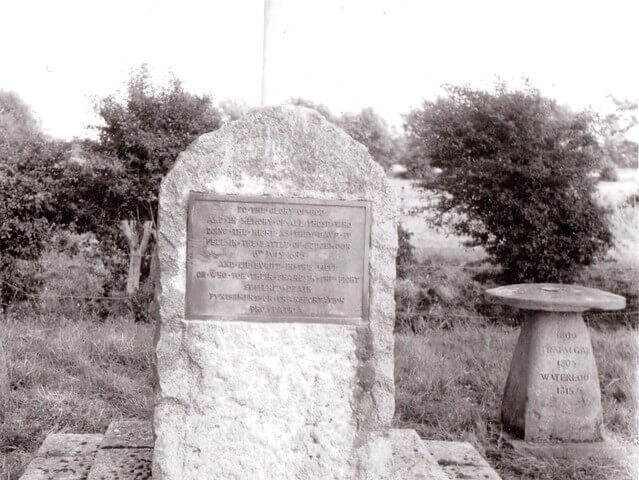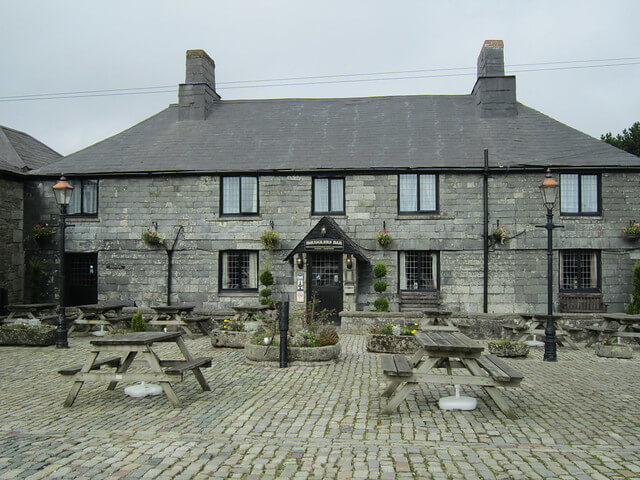Spine-tingling experiences await – are you ready to find out the most haunted places in the South West?
From spooky stories around the campfire to flying through forests on zip wires, we love to be scared.
But don’t bother with cheesy horror movies and dodgy dressing up – come to the West Country for real ghoulery thrills… if you dare!
Take a peep at the scariest and most haunted places in South West England…
Interested in a specific region? Use these quick links to jump to a different section:
Haunted places in Devon
Berry Pomeroy Castle, Devon

From Dartmoor myths and legends to age old folk tales, Devon is full of mystery and hauntings.
Deep in a wooded valley, discover the Berry Pomeroy Castle ghosts! This dramatic ruin within the 15th-century defences of the Pomeroy family castle is said to be one of the most haunted buildings in England.
Inexplicable Phenomena
Numerous ghostly sightings and inexplicable phenomena, including chilled air, odd lights and strange voices, make this one of the most haunted places in Devon too. Once intended to be the grandest house in Devon, its history was troubled and by the 16th-century, the building was abandoned.
Commonly Sighted Ghosts
The most commonly sighted ghosts are the White Lady and the Blue Lady.
The White Lady is believed to be the ghost of beautiful Margaret Pomeroy, abandoned and starved in the dungeon by her jealous sister Eleanor, who beckons from the ramparts of Margaret’s Tower.
The Blue Lady, with her anguished face, is a death portent of the Seymour family; it’s said she bore a child by her father, a Norman lord, which was strangled, either by herself or her father and today she lures visitors into parts of the castle where they get lost.
Can you visit Berry Pomeroy Castle?
English Heritage welcomes visitors to Berry Pomeroy Castle, with a chilling audio tour to take you round this haunted Devon attraction.
Where is Berry Pomeroy Castle?
Berry Pomeroy Castle is located in South Devon, just a short distance from the market town of Totnes. To stay nearby, take a look at our holiday cottages in Totnes.
Haunted places in Dorset
Bridport Museum, Dorset

This 16th-century building is one of the most haunted places in Dorset. It’s steeped in history, having previously been an inn, a bank and a private house.
Bridport Museum’s ghosts
Is it possible some of its former residents are here still?
Certainly, a figure dressed in black trousers and yellow smoking jacket, often seen contentedly wandering the building, is thought to be previous owner, Captain Albert Codd.
Amongst the displays, a Victorian dress of fine quality, which was left anonymously at the door of the museum, is also believed to have a supernatural aura. A young woman is frequently seen guarding the garment. A curator has even attempted – unsuccessfully – to have it exorcised.
The ghosts have free rein when Bridport Museum is closed; check out the website for safe times to visit and seek out Captain Codd!
Where is Bridport?
Bridport is located in West Dorset. To stay near Bridport, take a look at our range of holiday cottages in Dorset.
Haunted places in Somerset
Sedgemoor Battlefield, Somerset

Part of the beautiful, peaceful Somerset Levels, Sedgemoor doesn’t immediately strike you as ghostly.
But this is an ancient battlefield, scene of the last pitched battle in England, making it one of the most haunted places in Somerset.
It is thought to be haunted by troubled spirits, which is unsurprising when you delve into its tragic history.
What happened at the Battle of Sedgemoor?
In 1685 Sedgemoor was the bloody scene of the last battle of the Duke of Monmouth’s ‘pitchfork army’ who made their final stand in darkness against the troops of James II.
Armed with little more than farm implements, the 3,500 courageous farmers (of whom Daniel Defoe was one) were doomed.
How many people died in the Battle of Sedgemoor?
It’s thought around 1,300 rebels died on the battlefield, and another 500 were captured and held in the Westonzoyland church.
Those who survived became victims of Judge Jeffrey’s Bloody Assizes. There are reports of eerie voices crying in the mist, “Come over and fight!” which was how Monmouth’s farmers tried to convert the royalist troops to their cause.
Other Sedgemoor hauntings
There’s also the wraith of a young maiden who haunts the marshes. According to local legend, it’s the sweetheart of a labourer who was captured after the battle and challenged to save his life by outrunning a galloping horse.
Famed throughout Somerset as an exceptional runner, he succeeded but was still cut down, witnessed by his grief-stricken sweetheart who drowned herself in the River Carey.
If you listen carefully, it’s said her apparition is accompanied by the echo of galloping hooves and panting breaths in a whoosh of cold air.
Where was the Duke of Monmouth captured?
Monmouth himself was discovered dressed in shepherd’s clothing and cowering in a ditch several days after the battle.
He might have remained anonymous, but for the discovery of the Order of the Garter in his pocket. Subsequently executed at the Tower of London, Monmouth is believed to reappear on Sedgemoor on the anniversary of the battle.
Visit Sedgemoor
To explore Sedgemoor, why not stay close by in one of our Somerset cottages and learn more facts about Somerset and its heritage?
Haunted places in Cornwall
Jamaica Inn, Cornwall

Jamaica Inn is a real-life ‘Poldark’ scene of intrigue and contraband.
Why is Jamaica Inn famous?
Resting on the wilds of Bodmin Moor, Jamaica Inn is best known as the setting for Daphne du Maurier’s novel of the same name.
Published in 1936, Jamaica Inn follows the story of Mary, an orphan who goes to live with her aunt and uncle, landlord of the inn.
Who haunts the Jamaica Inn?
The inn has more than its share of troubled ghostly residents and is thought to be one of the most haunted places in the country.
It was a refuge for wreckers smuggling their valuable booty of brandy and tea to Devon. There goods were taken from ill-fated ships which they lured on to the rocky Cornish coast.
Their business seems to be unresolved, as landlords have reported hearing the ring of disembodied, uneasy boots pacing the floors.
There have been reports of muttered conversations within its walls, in a ‘foreign’ language believed to be old Cornish. Horses’ hooves and wheels echo mysteriously across the cobbles on moonlit nights and a figure in a three-cornered hat and cloak passes through closed doors.
Is Jamaica Inn on Bodmin Moor still open?
The bold can venture to Jamaica Inn for a drink or dinner. Following a refurbishment, you can visit the Smugglers Museum too.
If you’re feeling really intrepid, take part in the monthly murder mystery evening or sign up for a ‘paranormal investigation’ (very popular – book early!).
Take a look at the Jamaica Inn website for more information.
Bodmin Jail

Why is Bodmin Jail famous?
Bodmin Jail is known for being one of the most haunted jails in England. Built by King George III in 1779, Bodmin Jail has housed numerous prisoners and over 50 public executions took place within its walls.
Thousands of spectators would travel to the jail just to witness the hangings.
Who was the last person hanged at Bodmin Jail?
The last person to be hanged at Bodmin Jail was William Hampton. He was found guilty of the murder of his 17-year-old girlfriend and was executed in July 1909.
Can you visit Bodmin Jail?
You can explore the jail at your leisure, or why not partake in a paranormal tour or some ghost hunting and scare yourself silly?
Bodmin Jail’s Dark Walk uses the latest technology and theatrical effects to transport you back in time. Get a real life sense of what penal life would have been like in 18th and 19th century Cornwall.
It makes for a great Halloween-themed place to visit in October half term.
For more information, explore the Bodmin Jail website.
For more family-friendly Halloween attractions, discover a host of things to do in the October half term in Somerset! Perfect for family days out in the South West.
Article adapted from original content written by Christine Phillips for Helpful Holidays.
Images Courtesy of: Glen Bowman; Reading Tom; Bessie Hayward; Robert Linsdell (CC BY 2.0).